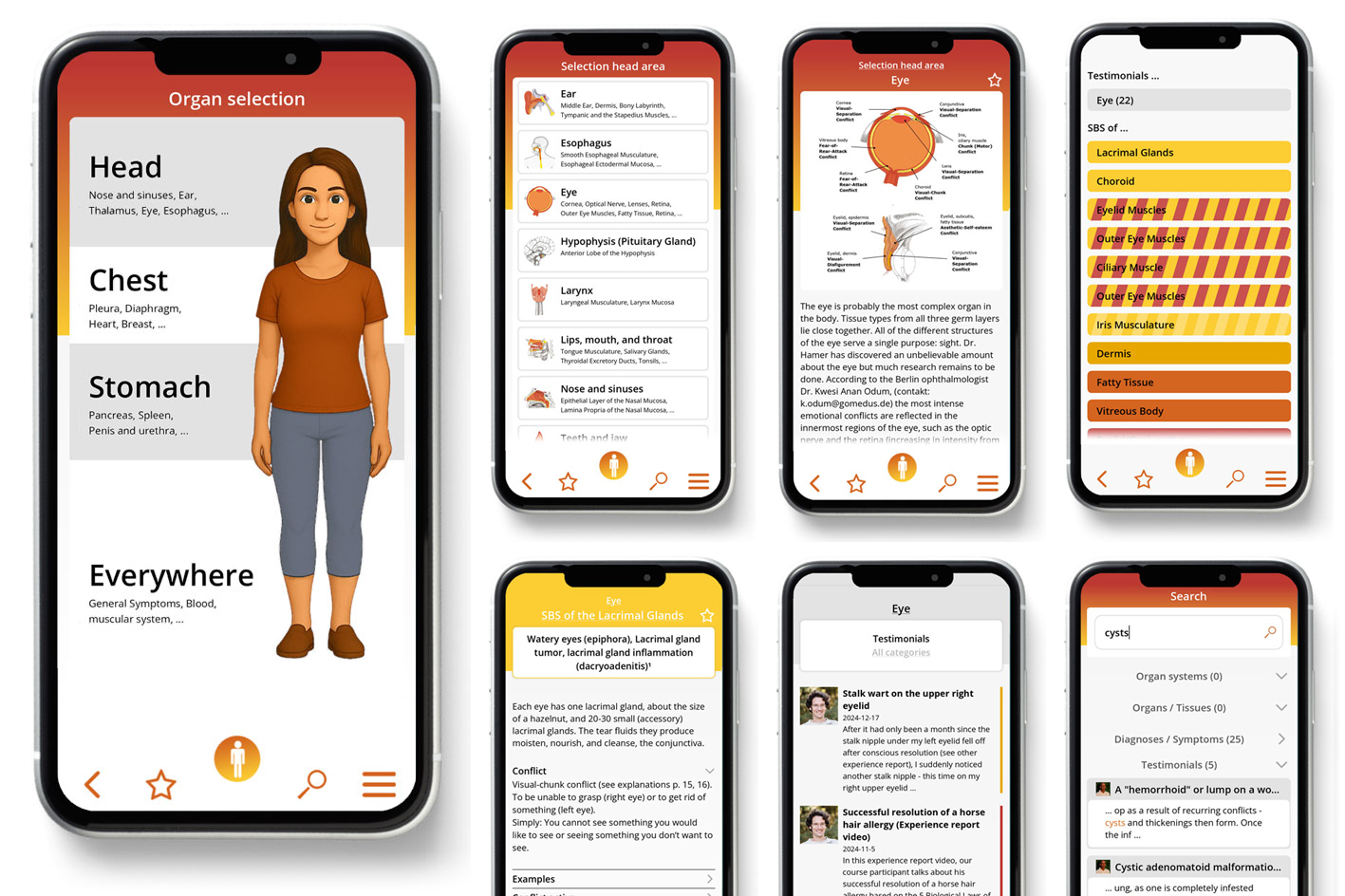 The information on this site is from one of the most famous books about the New Medicine (GNM / 5BN): "The Psychic Roots of Diseases" by Björn Eybl. Since September 2025, it is available in the form of an app with many additional features.
The information on this site is from one of the most famous books about the New Medicine (GNM / 5BN): "The Psychic Roots of Diseases" by Björn Eybl. Since September 2025, it is available in the form of an app with many additional features.It was written in german and was translated into more than 10 languages already. German is not freely available, as the rights are held by a publisher, but all these translations are available as ebooks / PDFs for free, as a gift of Björn for you, for the New Earth, for a new time.
In cooperation with Björn, it is splitted on "Disease is Different" into the sections by organ systems and combined with the real cases of our international testimonial / report archive of the related organ system.
CONSTELLATIONS
“Order is the recognition of boundaries.”
Bert Hellinger
In the course of his research, Dr. Hamer discovered that most psychic illnesses are also linked to conflicts, or to be more precise, to conflict constellations.
In order to understand “psychoses“ in their full depth, one would have to study Dr. Hamer‘s original literature, but without any great expectations with regard to therapy. After many years of practical experience, I must (unfortunately) say that the knowledge of constellations, albeit interesting, isn’t as useful for patients as I’d hoped. In this context, I find Family Constellations as discovered by Hellinger (p. 53) and the knowledge of conditioning (p. 27 much more important for aiding conflict resolution and bringing an end to patients’ complaints.
By constellation, we mean the interplay between two or more active Hamer foci on the right and left sides of the brain.
We are all more or less affected by constellations, even when it is not always obvious. Where and in which order the conflicts affect the cerebrum depends on sex, handedness, hormone levels, age and previous conflicts.
Even if I always mention the right-handed when talking about cerebral constellations, that doesn‘t mean that the left-handed are not affected by constellations.
How the conflict is perceived and the order of conflicts is different for left-handed people, simply because they are, in principle, “operating“ on the other side of the brain.
Constellations do not automatically cause physical illnesses, because when they come into alignment, the gathering of conflict mass (and its maturation) stops.
This is why, for example, when we find a Hamer focus in constellation in the bronchial relay, we often do not find any bronchial symptoms.
Even though Dr. Hamer ascribed a so-called “super sense” to constellations, i.e. something good — we must note that he generally disparaged people in constellations.
From a biological perspective, not the “alpha wolf” but rather the “beta wolf,” “put in their place,” relegated, a failure in battle, arrested development. The “alpha” on the other hand — victorious, not flawed by conflict.
A new perspective
There is no doubt that packs organize themselves according to rank. However, I think we as human beings are being called upon to use our consciousness and transcend the “law of the jungle.” In doing so, we can set an example with our reason and compassion.
Simply put: We can rush forward in manic constellations or trudge on, tormented by depression. However, we can also make a conscious choice and opt for a third possibility — transformation.
In the following, I describe the constellations we have been able to understand so far, and I have supplemented them with a third “whole state” — the transformed constellation.
Before that, however, I would like to present a new way of looking at and treating constellations:
Findings from the groups associated with Uwe Eggers — a link between Hamer and Hellinger
A contribution by my colleague Viola Heins: We know the phenomenon of choleric character types (= bio-aggressive constellation, p. 390): A person with a friendly disposition is suddenly beside themselves with rage from one moment to the next. Later they think: How could I go berserk like that? I must have been beside myself? So, we dare to ask: Who was in control at that moment? Do conflict shocks in the brain create channels through which other, undesirable entities can gain access to our being?
Yes. We found out that at least one soul corresponds to every constellation that existed or exists within a human being. In this way, the soul finds a voice and can express itself. It claims its right to be seen and recognized. It is in this relationship with this particular person for a certain reason.
In practice, you let the patient explain their conflicts and, what a “surprise,” the essence of the conflict is also found in the story of their ancestors – often, even in a more dramatic form. In many cases there is also a connection with a previous incarnation (see p. 32). In such cases, through their own behavior, the client established the cause of this destiny that now befalls them.
Questioning the cause leads to the following question: Why does this conflict affect me in particular?
We found out that a person’s external experiences only indicate what is going on inside them.
During a session, when someone forebodingly says the right thing, those present immediately feel that it is the truth — often getting the shivers.
The search for the cause can be accelerated, e.g., with a bio-tensor. A family constellation à la Bert Hellinger is another way to sense this information field.
Hellinger’s guiding principles (see p. 53) are indispensable in recognizing and resolving emotional entanglements.
Where destinies go unrecognized, they have to reveal themselves repeatedly over generations.
a Case study by the alternative practitioner Viola Heins: Ina (name changed) is a mother of four children. Ina is, from case to case, in an autistic constellation, a mythomaniac constellation, and a cerebral white matter (megalomaniacal) constellation. She is meticulous at work, sometimes finds very apt words, and works almost non-stop.
We first take a look at Ina’s great-great-grandmother Ida (on the top right of her family tree): Her first child died at the age of two weeks. Unfortunately, the children born afterward learned nothing of this. The consequence of this concealment: In each of the next generations, a first-born child died very early. And each time, the death was concealed until the great-great-granddaughter, Ina, finally uncovers the connections.
She is probably the same soul as Ida because there are some parallels Ina is now aware of. E.g., she has been searching among her patients for children who died at an early age for some time. As her great-great-grandmother in a previous incarnation, she herself established the cause when she concealed (the existence of) her first child.
Autistic Constellation (p. 389)
Amalie (the great-great-grandmother’s deceased 1st child) is connected with Ina through the autistic constellation.
In other words: “Amalie is occupying Ina’s autistic constellation.”
Amalie: died as a baby at 2 weeks on an ice-cold night in her bassinet (left alone in the cradle).
Bound by a similar destiny:
Ina’s 1st conflict: shock-fright conflict at birth via a slap on the butt.
Ina‘s 2nd conflict: Territorial-anger due to lonely nights in an adjoining room without her mom (left alone in the cradle).
Mythomaniac Constellation (p. 389)
Ida’s sixth child, Elisabeth, is occupying this one, as her mother followed her to her death (Ida died after the birth of Elisabeth).
Elisabeth: Her mother died and left the infant behind, bewildered. Her impression during the trauma: „Mother can no longer do anything for me; I’m afraid.”
Ina: 1st conflict: hospitalization at 3 years without mother. Traumatic parting in tears. (Mother can no longer do anything for me) = territorial anxiety conflict. 2nd conflict: She is confined to bed = identity conflict.
Cerebral White Matter Constellation (p. 388) (heart muscle R + L)
Hans, Ida’s first husband and fallen sailor (top center in her family tree, is occupying this constellation.
Hans was obviously overwhelmed by the things he cared about: meeting his wife’s and his Emperor’s demands. (Military conscription — if you don’t volunteer, you get pressed into service).
Ina: 1st conflict: excessive demands. Not being able to help her father when her mother has the police take him away to a psychiatric ward. 2nd conflict: pressure to perform at school (not being able to meet the demands).
These connections became clear to Ida through genealogical research, family constellations, and her work with Uwe Eggers. By recognizing them, these souls could be freed from the constellations. In following generations, these family members, now recognized, will no longer need to make their presence felt through conflicts.
A New View on Conflicts
We may come to understand that people only suffer conflicts so that these (responsible) souls will be found and entanglements with previous incarnations can be resolved.
Conflicts essentially ask us to recognize these connections and take full responsibility for our destiny.
When drawing up your family tree, all family members must be in the “right” place, so they receive the appreciation they deserve by simply being included.
You begin with yourself and your siblings, who are positioned from left to right in the order of their appearance in the family. You cannot leave out abortions, miscarriages, etc.
If present, you then draw your life partner next to yourself: the husband (r) to the left, the wife (m) to the right.
Your common children are entered below, your own parents with their brothers and sisters above, your grandparents over them …
Approach to the Treatment of Diseases
1. Find the conflict (the direct trigger of the disease).
2. Find early childhood conflicts.
3. Find conditioning (sensitization): During conception, pregnancy, and birth, the unborn essentially experiences the parents’ conflicts as its own.
4. Exploring ancestral history: To which ancestor does the disease belong? Which ancestors were not sufficiently appreciated? Did one of them have a difficult fate that wasn’t recognized? Or was someone’s existence hushed up?
We are looking for children who died at an early age, those who died in battle, murderers, the murdered, renegades, etc. Energetically, these people should be accepted back into the family again.
5. Previous incarnation: Immersed in their destiny, sensitive people can directly “see” events from a previous life. It is also possible to “ask” by means of a bio-tensor. Attentive therapists can sometimes hear the previous incarnation’s issue through the patient’s words.
“It is like they are telling two stories at the same time.”
When you can recognize and appreciate these connections, the disease is no longer needed — it is allowed to leave forever, and children no longer have to continue bearing this fate.
Release technique according to Uwe Eggers: The subject enters into the feeling they felt at that time of the shock, relives the emotion of that episode, and you pass your hand over certain parts of the body.
We repeat these passes for each ancestor involved: In this way, e.g., the mother is allowed to release the stress of her pregnancy — the ancestors are allowed to leave their unresolved issues behind.
Result: The stress is released; the events of the time can be viewed without emotional pain (= liberation).
By liberating the ancestors and liberating the emotions from your (own) previous incarnations, conflict and healing phase symptoms melt away like ice in the sun.
Free worksheet for finding souls in the territorial areas PDF: https://shop.gnm-wissen.de/arbeitsbogen-seelen-revierbereiche.
In Uwe Eggers’ Telegram group, you can follow the methodology and connect with existing study groups: https://t.me/UweEggers.
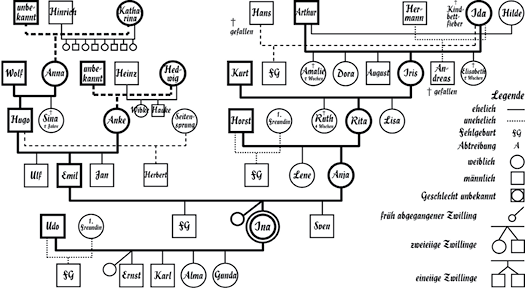
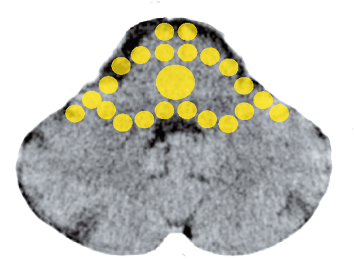
Confusion, bewilderment, Alzheimer‘s disease, vegetative state1
| Characteristics | Frozen, spatially/temporally disoriented, unreactive, persisting, apathetic, lethargic, forgetful, inability of making decisions, “collector,” “hoarder,” Alzheimer’s disease, in extreme cases — persistent vegetative state. |
|---|---|
| Conflict | Chunk-conflict left + right in the brainstem. (Image: kidney collecting tubules SBS, see: p.277) |
| Organ | Brainstem SBS, especially kidney collecting tubules SBS, both sides. |
| Bio. function | It is better to wait quietly, to get through the bad times (energy saving). |
| Transformed | I wait and observe, learn my lessons and then act decisively. |
1 See Dr. Hamer, Charts p. 11
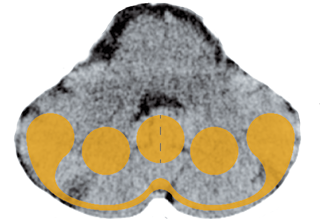
Emotionally “like dead/burned out,“ asocial or overly social1
| Characteristics | Listless, empty and cold, one feels nothing, aloof, inaccessible, emotionally blunted and encapsulated, burnout. Inclination to unconventional or crazy acts. |
|---|---|
| Conflict | Attack, worries, quarrel conflicts. Left + right cerebellum conflict. (Image: breast glands) |
| Organ | Breast glands, peritoneum, pleura, left + right pericardium or dermis right + left. |
| Bio. function | Asocial: self-protection from becoming further “burned out.“ Overly social: One gives it all to be accepted back into the community/tribe. |
| Transformed | I pay attention to my needs and give only as much as I am able give gladly/lovingly. |
1 See Dr. Hamer, Charts p. 43
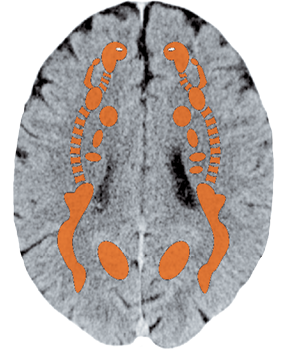
Delusions of grandeur (megalomania)1
| Characteristics | The kind of megalomania depends on the conflict topics. Knee: physical megalomania. Testicular/ovarian: potency/sex megalomania. Heart muscle: “I-create-everything mania,“ helper syndrome. Cervical spine: “I-am-the-smartest mania.“ |
|---|---|
| Conflict/Brain area | Self-esteem conflict — cerebral white matter left + right. Musculoskeletal right + left. |
| Note | Exception: this constellation (megalomania) continues to the end of the repair phase. |
| Bio. function | The individual‘s self-esteem has been destroyed. By believing in his greatness, he gains courage and pulls himself up, out of the mud. |
| Transformed | Compared to other beings in the universe, I am likely of little significance. Yet in the Child-of-God Consciousness, I am very valuable. |
1 See Dr. Hamer, Charts p. 59
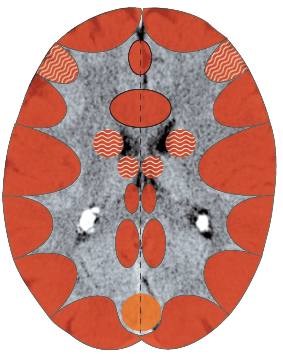
Mania and depression1
Whether a person is or becomes manic or depressed depends on whether the so-called territorial part of the left or right cerebral cortex is affected by conflicts and which side is accentuated (more affected).
The territorial area of the left (feminine) side: • coronary veins and cervical mucosa • rectal mucosa • laryngeal mucosa and muscles • right bladder mucous membrane.
The territorial area of the right (masculine) side: • coronary arteries and mucosa of the seminal vesicles • stomach mucous membrane-epithelium • bile ducts and pancreatic excretory ducts • bronchial mucosa and musculature • left bladder mucosa.
Summary: If the left side is affected more, the tendency is toward mania. If the right side is affected more, it is toward depression. If the conflicts switch between the two, the person is manic-depressive.
There are many different variations, according to which relays are specifically affected and how strongly. For example, there are depressive or manic autistic persons as well as manic-depressive mythomaniacs (compulsive liars). (See below)
Restless activity (mania)2
| Characteristics | Exaggerated excitement, inner compulsion, “lack of sensitivity,“ inability to pay attention (cannot listen), uncritical behavior, unwarranted good mood — “Ants in his pants!“ |
|---|---|
| Label | Manic constellation. |
| Conflict | Territorial conflict — conflict emphasis on the left (feminine) side. |
Despondency (depression)2
| Characteristics | Lack of motivation, listlessness, one cannot look forward to anything enjoyable. Mild forms: “sensitive person,” shyness or introversion. |
|---|---|
| Label | Depressive constellation. |
| Conflict | Conflict emphasis on the right (masculine) side. We can become despondent, as soon as the conflict strikes us, however, we are usually in a safe constellation. |
| Organ | Cerebral cortex — territorial area. Normally, the relay of the coronary arteries is affected. Heart problems and heart-fear are common in depressive patients, but are not always the case, because in constellations, no conflict mass is built up — one is “protected.“ |
| Therapy | Find and resolve the conflicts and conditioning but be careful with conflicts that have long been “solo.“ |
Postmortem constellation — afterlife constellation2
| Characteristics | Feeling of being redundant. Familiar with the subject of death and afterlife. Interest in religion and esoteric subjects. Susceptibility to sects. Contact with the dead, angels, good connection to animals. Draws up a will. Questions: “What will everything here be like after I die?“ |
|---|---|
| Conflict | Female loss-of-territory conflict + male loss-of-territory conflict. |
| Brain area | Cerebral cortex — peri-insular left + right, coronary veins and arteries. |
| Bio. function | In this world, everything is lost > The individual feels that their place is in the afterlife. |
| Transformed | I will use my short life on Earth to leave behind traces of love. |
Nympho, and Casanova constellation, increased sex drive
(nymphomania, satyriasis)2
Same constellation as above.
| Characteristics | The focus is on the opposite sex. Chasing men/women but not capable of a relationship, because of the old wounds. Limited orgasm capability/frigid. Tendency to homo-, bisexuality, nymphomania. Common constellation of prostitutes, pimps, nuns & priests. An early constellation is also likely responsible for pedophilia because of the maturity stop. |
|---|---|
| Conflict | Female loss-of-territory conflict + male loss-of-territory conflict. Also in the male loss-of-territory conflict — sexual or partner-related content. |
| Brain area/Organ | Cerebral cortex — periinsular left + right. Coronary veins + coronary arteries. |
| Bio. function | Strong sexual desire > quick mating choice > solution to the loss-of-territory conflict. |
| Transformed | I realize that sexual union is merely the physical aspect of an even greater union. Becoming one, in this greater sense, is permanent and provides true happiness. |
Compulsive stealing (kleptomania)2
Same constellation as above. In addition a motor conflict occurs.
| Bio. function | The individual has lost his territory (= life support, source of food). In order to survive, he must take his food from foreign territory. |
|---|---|
| Transformed | We reap what we sow. Therefore, I always want to give more than I take. |
Autistic constellation — seclusion, introversion (autism)3
| Characteristics | Depressive emphasized: little contact with the environment, brooding, loner, apathetic staring into space. Manic emphasized: thirst, may be extremely engrossed in work. |
|---|---|
| Conflict | Shock-fright or speechlessness conflict + territorial-anger conflict (in the right side). Brain area: cerebral cortex — left + right temporal lobes. |
| Bio. function | Hard working, “stays tuned“ to the end — an important task in the pack. |
| Transformed | My withdrawal from the outside world opens new doors and new spaces. What is in the innermost of all? |
Mythomaniac constellation (compulsive exaggeration/lying), extroversion1
| Characteristics | Talks a lot and well, usually in a good mood, funny, not very reliable. Often politicians, journalists, writers, priests, communication coaches, presenters, comedians, used car salesmen. |
|---|---|
| Conflict | Identity conflict + territorial-fear conflict (in the right-handed). |
| Brain area | Brain area Cerebral cortex — left + right temporal lobes, rectal mucosa + bronchial mucosa. |
| Bio. function | According R. Körner: Through communication, the pack is held together and strengthened. |
| Transformed | Through my words, both in thought and spoken, clarity emerges in my search for truth. |
Bioaggressive constellation — aggression, mania, running amok4
| Characteristics | Great thirst, high energy level, athletic (especially martial arts). Easily provoked, violent, thoughts of revenge. Emphasized depressiveness: piercing and cutting. |
|---|---|
| Conflict | Identity conflict + territorial-anger conflict (in the right-handed). |
| Brain area | Cerebral cortex — temporal lobes right + left. |
| Bio. function | The individual was driven into a corner. Renewed attacks are reached with increased aggressiveness — perceived: there‘s no more room. |
| Transformed | I listen deep inside myself. I do this so I can always apply my energy toward: “Your will be done.” |
Frontal-fear constellation — anxiety, fear of the future (anxiety neurosis)4
| Characteristics | Fear of the future (e.g., before appointments). One imagines the worst. |
|---|---|
| Conflict | Powerlessness conflict + frontal-fear conflict (in the right-handed). |
| Brain area | Cerebral cortex — left + right frontal lobes, thyroid excretory ducts + branchial arches. |
| Bio. function | Extreme anxiety and cautiousness safeguards the individual from new disasters. |
| Transformed | I was allowed to experience the deepest fear and I dove deep into this feeling. What did I find there? |
Territory marking constellation — claustrophobia, bed-wetting
| Characteristics | Anxiety in crowds, tunnels, elevators, public places, etc. |
|---|---|
| Conflict | Territorial-marking conflict. |
| Brain area | Cerebral cortex — left + right temporal lobes. |
| Organ | Bladder mucosa, left + right. |
| Bio. function | Persons with claustrophobia avoid tight places = protection. |
| Transformed | The place that I can really call home is my inner self. I am always safe and secure there. |
Occipital constellation — paranoia, hallucinations4
| Characteristics | Unfounded fears, one suspects behind everything is a ruse or conspiracy. Always careful and suspicious. Sometimes clairvoyant, hunches. |
|---|---|
| Conflict | Fear-from-behind conflict. |
| Brain area | Cerebral cortex — left + right visual cortex, retina or right + left vitreous body. |
| Bio. function | Protection from further harm through caution and premonitions. |
| Transformed | Today, I will consider others to be just as important as I consider myself. |
Fronto-occipital constellation — shocked solidification (catalepsy), anxiety4
| Characteristics | Unpredictable — the individual feels trapped; panic, anxiety. |
|---|---|
| Conflict | Powerlessness or frontal-fear conflict + fear-from-behind conflict(s). |
| Brain area | Cerebral cortex — the frontal lobe left or right + left or right visual cortex. |
| Organ | Thyroid excretory ducts or branchial arches + retina or vitreous body. |
| Bio. function | The individual is caught “in a trap” and danger is approaching from the front and back. In this case better not to move or to do something completely unexpected. |
| Transformed | Thankfully, there’s nothing more to lose. It’s a wonderful ability, to be able to live this day as if it were my last. |
Floating constellation — withdrawn aloofness5
| Characteristics | One floats above it all, is enlightened, sublime. Haughtiness, arrogance, flighty dreams, astral travel (manic), falling dreams (depressive), tendency toward sects, loves heights, not grounded, often pilots, parachutists and gurus. |
|---|---|
| Conflict | Shock-fright or speechlessness conflict + territorial-fear conflict (in the right-handed). |
| Brain area | Cerebral cortex — left and right temporal lobes. |
| Organ | Larynx mucosa and/or musculature + bronchial mucosa and/or musculature. |
| Bio. function | The individual is “lifted away“ from an oppressive reality = psychic relief. |
| Transformed | I know the high and the mighty — thus, I learn to understand the lowly and the meek. |
Hearing constellation — hearing voices (auditory hallucinations)5
| Conflict | Hearing conflicts. One hears voices. |
|---|---|
| Characteristics | Imaginary or real voices from another dimension — both are possible. CM: paranoid schizophrenia. Clairaudience, channeling and composers’ constellation. |
| Brain area/Organ | Cerebral cortex — auditory cortex right and left (lower than pictured!) Inner ear right + left. |
| Bio. function | Voices, tinnitus warn the individual of similar situations (“alarm system“). |
| Transformed | I want to combine my gift of intuition with clarity of thought and the ability to make distinctions. |
Obsessive-constellation — compulsive actions
| Characteristics | Compulsiveness, e.g., washing, cleanliness, control, order, touch etc. |
|---|---|
| Conflict | Fear-disgust conflict + sensory conflict (in the right-handed). |
| Brain area | Diencephalon left + right sensory and motor cerebral cortex. |
| Organ | Pancreas — alpha-islet cells, beta-islet cells, skin + musculature. |
| Transformed | At the beginning, it was about controlling the outside. Now, it’s about controlling my own thoughts. |
Anorexia constellation — loss of appetite (anorexia)5
| Conflict | Any left-cerebral territorial conflict + territorial-anger conflict (in the right-handed). |
|---|---|
| Brain area | Cerebral cortex — left + right temporal lobes. |
| Organ | Any left-cerebral territorial SBS + ectodermal stomach mucosa. |
| Notes | Anorexia begins often after the first menstrual cycle = indication of territorial relationship. Often found among overprotected children in families that place a great value on performance. Girls are affected more often than boys. |
| Transformed | I strive for purity and perfection — but I still dive in, into this colorful life! |
| Further aspects | There are many possible causes and they must be addressed individually. • Belief structure: “I will only be loved when I’m thin.” E.g. originating from careless statements by parents. • Ancestral issue: “It is dangerous to be a physically developed woman.” (See Turner syndrome p. 312) • Exaggerated demand for perfection due to a lack of self-esteem. This may lead to great achievements in school, sports and hobbies. Our commercial culture demands thin, sex-symbol bodies — those who have little love for themselves and are insecure will follow this dictate. Low self-esteem is often handed down over many generations. • Those who don’t eat want to remain pure and are drawn to the afterlife. Sexuality or deep emotions are perceived as dirty. Questions: Is sexuality regarded as something taboo/bad in the family? (Catholic upbringing) Does the affected want to join someone in death? (Parent or sibling) Therapy: Reconsider ancestral dogmas. “I will be left behind when you are gone.” “I will only be able to fulfill the divine plan for my incarnation when I also have intense experiences.” • Observation by a veterinarian: Small fish in an aquarium eat less, so that they don’t grow to rival/provoke the bigger fish. > Starving and staying small as a survival strategy. Bulimia sufferers are often the “little ones” in the family. (Older/more dominant siblings) Therapy: “I am an even bigger fish and I love to eat big fish.” • According to Dr. Sabbah, a mother-issue, because the mother nourishes (wanted more motherly love). |
Bulimic constellation — bulimia addiction (bulimia)5
| Conflict | Fear-disgust conflict + territorial-anger conflict in persistent repair (in the right-handed). |
|---|---|
| Brain area | Diencephalon left + cerebral cortex — right temporal lobe. |
| Organ | Pancreas — alpha-islet cells + ectodermal stomach mucosa. |
| Note | Cravings from hypoglycemia, nausea through repair phase crisis of the stomach mucosa. |
| Transformed | Taking care of my own needs — only then am I able to give my love to others. |
Loss of intellectual capacity — dementia, Alzheimer‘s disease
| Characteristics | Extreme forgetfulness, learning difficulties (e.g., with students). |
|---|---|
| Conflict | Chronic-active or recurring separation conflicts (see: p.332). In my experience: little self-love. The longing for love. Having lost contact with one’s own feelings and the joy of life. |
| Label | Sensory constellation. |
| Examples | ➜ Loss of life partner after many years = separation conflict. ➜ Someone has to go to a nursing home. Everything that was dear to them is suddenly gone. |
| Brain area | Cerebral cortex — sensory-cortex left + right (image: sensory legs). |
| Conflict-active | Limitation of short-term memory, loss of cognitive abilities, problems with simple tasks such as making shopping lists. |
| Organ | Most likely only a manifestation of the brain, the skin does not have to be affected. |
| Bio. function | Forgetting the separations so the individual no longer has to suffer. |
| Transformed | The journey I was on is coming to an end. I can already see my home beyond the veil. |
| Therapy | Determine the conflict and conditioning and, if possible, resolve in real life. |
Further possible causes for dementia
- Constellation of the brainstem: Here, spatial and temporal disorientation are paramount. The person cannot find his way around his own room, no longer recognizes people or objects, thinks he is somewhere else or for instance is living at another time in another place (see: p.387).
- No longer being part of life, has no tasks and goals anymore (everything is done by others, e.g., nursing home). One loses curiosity and interest in life.
- Chronic malnutrition due to industrial foods or poisoning through food additives/pesticides such as glutamate, aspartame, glyphosate, preservatives, citric acid, food coloring, aluminum, fluorine etc (see: p.64).
- Chronic poisoning through medication (e.g., psychotropic drugs, blood thinners, blood pressure medication), vaccinations (see: p.68).
- Chronic exposure to electro-smog (see: p.74).
All experience reports on the organ system «Constellations» from the International Report Archive:
| Author | Title and Overview | Keywords | ||||
|---|---|---|---|---|---|---|
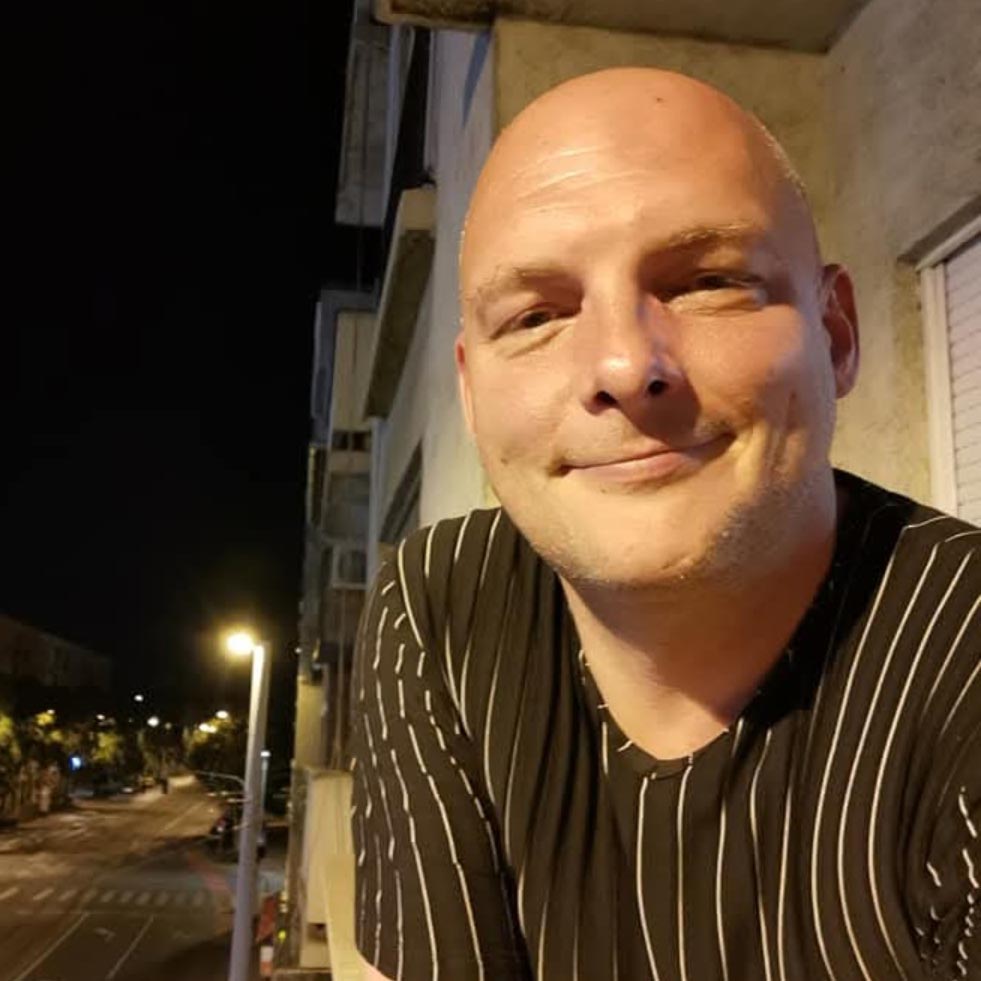 | 2025/09/24   Several events, only on the supposedly “wrong” side - we found a clear page shift | Perceiving one's partner as a child | ||||
 | 2025/08/28   The way symptoms in a small child could be used to find out the mother's primal conflicts. | Experience report: teeth grinding and enuresis, as well as cerebellar constellation | ||||
 | 2022/11/13   I had a partner 17 years ago who treated me badly. He belittled me every day and said I couldn't do anything, was stupid etc. and he didn't like to leave me alone, and I was also beaten from time to time ... | Constellation, territory areas, bipolar disorder, manic-depressive | ||||
2021/06/30    These are the testimonials (in brief) of the first seven successfully resolved allergies of the participants of our practice course "Resolving Allergies". The reports are available as text and video (the video is in german, but has english and spanish subtitles):  | Track, resolving allergies | |||||
 | 2021/03/12    In these report are different symptoms combined, as they nearly all were the deleterious results of 20 years of being married to a covert narcissist. After a second, very happy marriage, I developed symptoms of "breast cancer" after the sudden death of my wife. |
